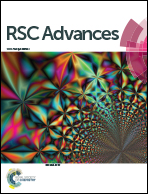Enhanced attachment of human mesenchymal stem cells on nanograined titania surfaces
Abstract
Surface nanostructures have shown potential as biomaterials, in tissue engineering and regenerative medicine devices since they have been shown to enhance cellular function by modulating cell–surface interactions in a controlled manner. This work studies human stem cell behavior on titanium dioxide (TiO2) nanotubes that were fabricated on nano-grained (NG) and coarse-grained (CG) substrates. The NG substrates were derived by surface mechanical attrition treatment (SMAT), which has the advantage of being simple to implement. The TiO2 nanotube layer formed on the SMATed titanium (Ti) is thicker and has an inner diameter (70 nm) greater than a comparable layer observed on an untreated (40 nm) substrate. The results illustrate that a NG Ti layer favors the growth of TiO2 nanotubes; presumably due to the high density of grain boundaries and dislocations. An increase in adhesion of human mesenchymal stem cells (hMSCs) in short term culture was observed on the TiO2 nanotubes grown on the NG substrate compared to those grown on the CG substrate, which we attribute to the various roughness and hydrophilicity differences between the two surfaces. Additionally, higher specific strengths of the TiO2 nanotubes may also be achieved by taking advantage of the Ti grain changes on the substrate and the subsequent growth of the nanotubes. Furthermore, structural deformations at the nanoscale can be exploited to manufacture advanced biomaterial surfaces that are designed to enable improved stem cell attachment.


 Please wait while we load your content...
Please wait while we load your content...